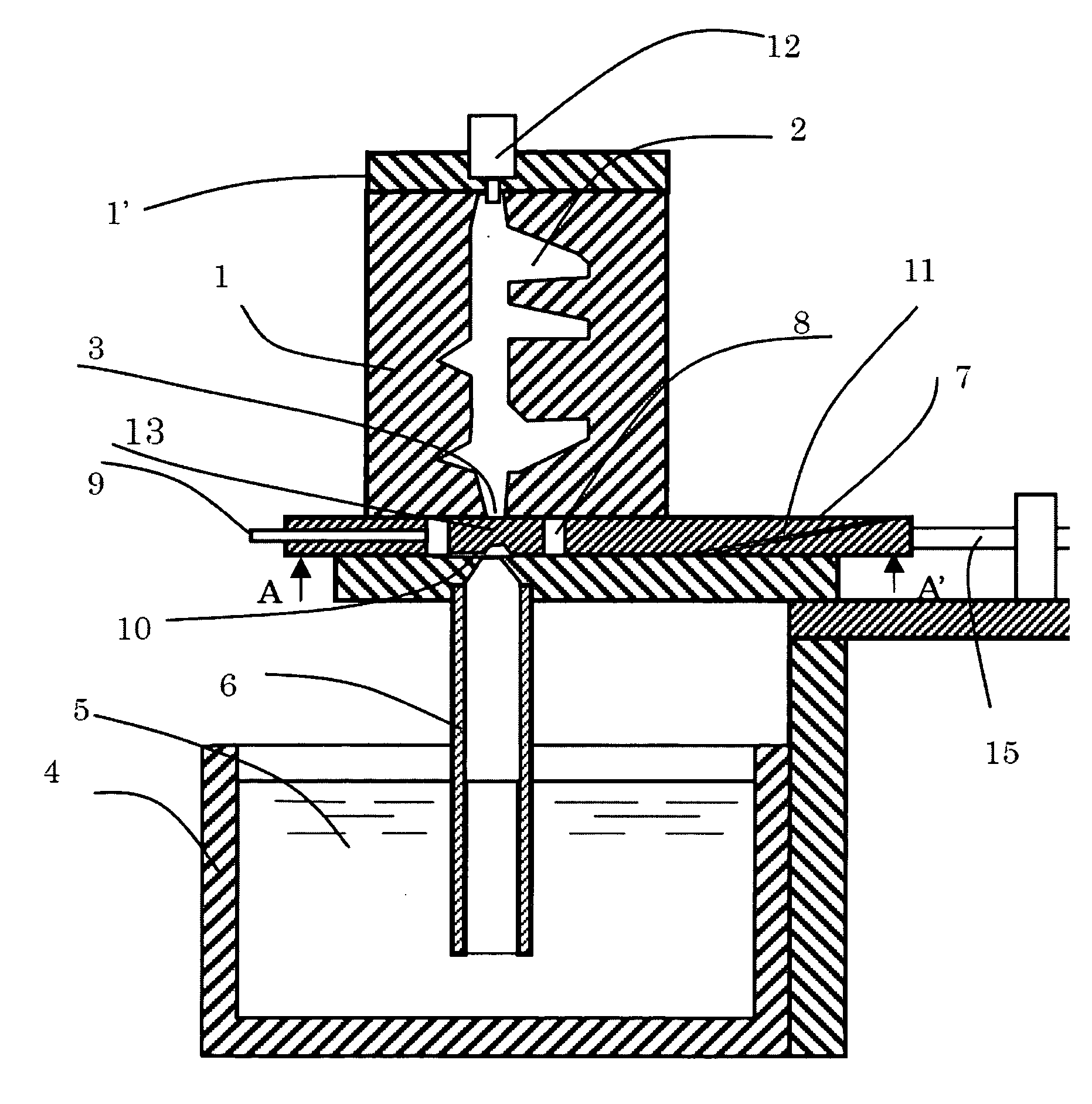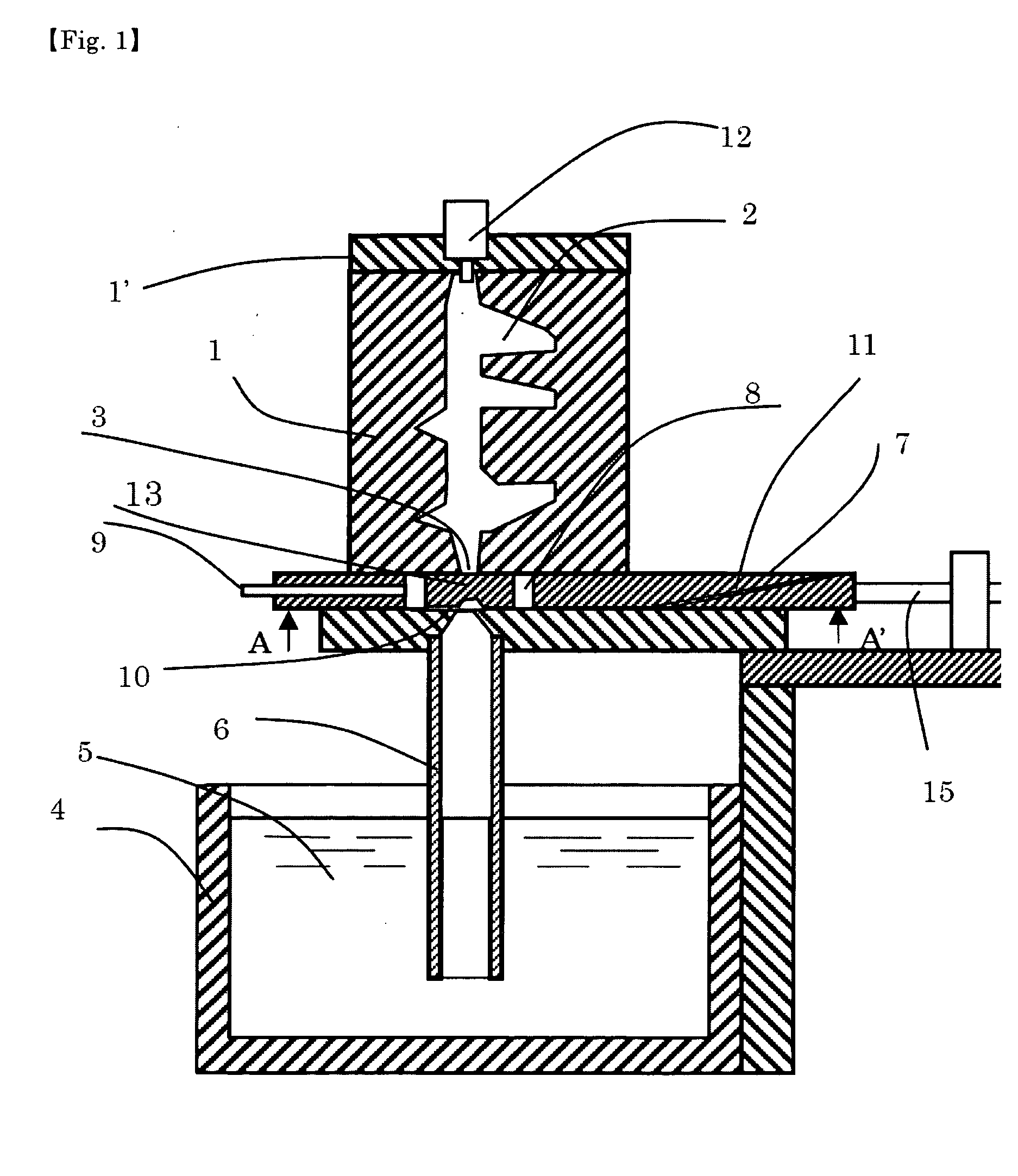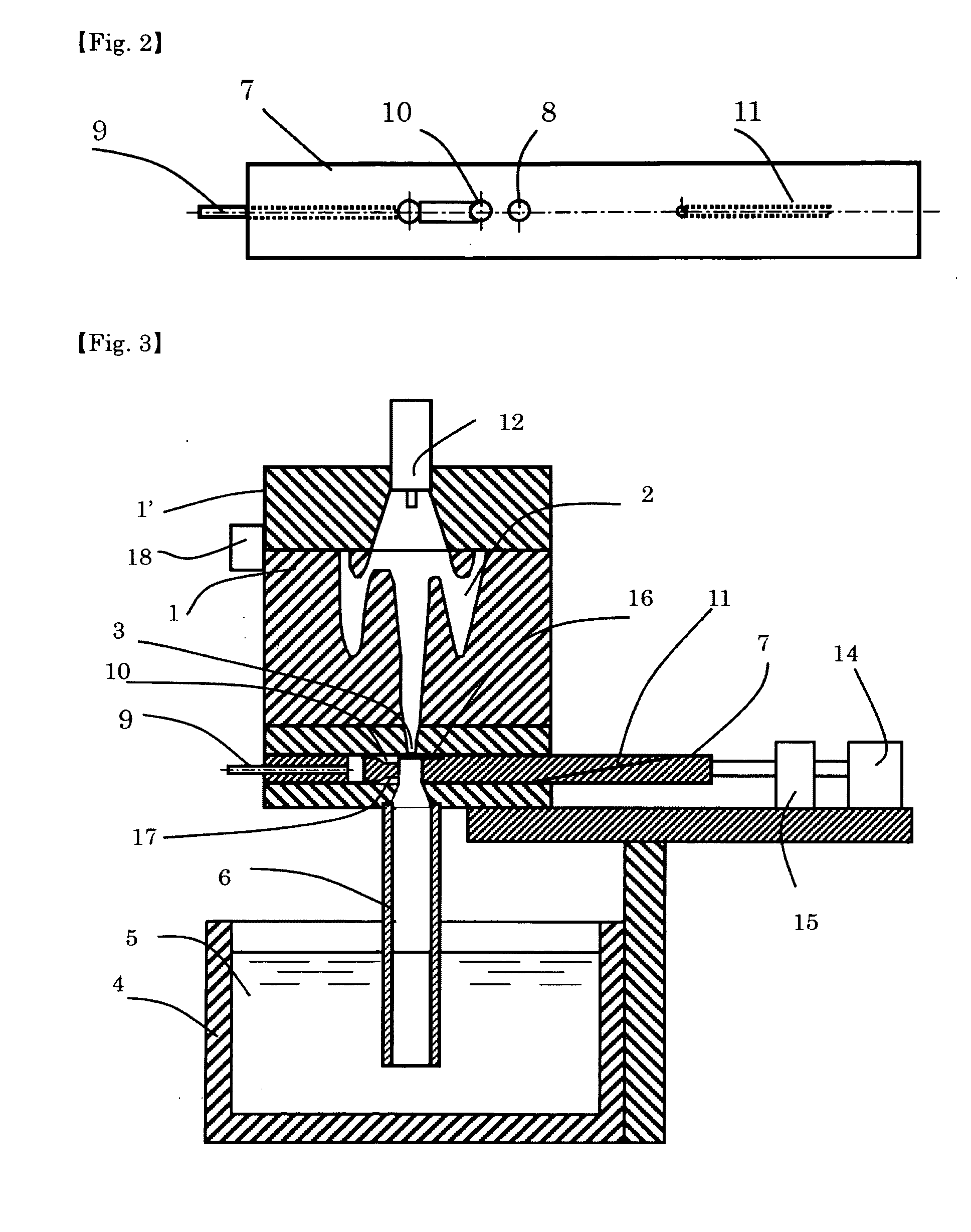High vacuum suction casting method and apparatus
a vacuum casting and vacuum technology, applied in the direction of casting parameters measurement/indication devices, manufacturing tools,foundry moulding apparatuses, etc., can solve the problems of inferior mechanical and chemical properties of the cast product, gas defects, shrinkage cavity defects, etc., to improve production, the effect of not excessively long time and high vacuum
- Summary
- Abstract
- Description
- Claims
- Application Information
AI Technical Summary
Benefits of technology
Problems solved by technology
Method used
Image
Examples
example 1
[0074]Example 1 is shown in FIG. 1. In the present embodiment, the space between a gate 3 of the lower portion of a die cavity 2 inside dies land 1′ which corresponds to a shape of a product, and a feeding tube 6 in which a molten metal 5 is immersed in a holding furnace or melting furnace 4, is closed with a sealing plate 7 (shown from below in FIG. 2), and an opening 8 provided in the die cavity 2 and the sealing plate 7 is depressurized. In this state, the opening 8 is depressurized as a result of only being connected to the die cavity 2 through a thin plate-like groove. Although this groove is preferably formed in the sealing plate, it may also be provided in the lower portion of the die. Next, molten metal is sucked by depressurizing the inside of the feeding tube 6 through a feeding tube depressurizing pipe 9 and a pressure reduction vent 10 provided in the sealing plate in the upper portion of the feeding tube 6, causing the molten metal to rise while maintaining the surface ...
example 2
[0081]In FIG. 3, a pure Al plate having a thickness of about 100 μm is used as a consumable seal 16 for the seal of the gate 3. The structure of the sealing plate in this case is shown in FIG. 4. The consumable seal 16 is installed by moving the sealing plate 7 to the left, placing the consumable seal 16 at a holding section, and moving to the upper portion of the feeding tube 6. When the die cavity 2 is depressurized, the consumable seal 16 is adhered to the gate 3 by the attractive force thereof thereby sealing the gate 3. Alternatively, a consumable seal may be affixed to the gate 3 at another location while depressurizing the die cavity.
[0082]Subsequently, the inside of the feeding tube is depressurized from the feeding tube depressurizing pipe 9 through pressure reduction vents 10 and 17 in the upper end of the feeding tube 6. When the surface of the molten metal reaches the pressure reduction vent 17, oxide films and molten metal having the possibility of containing suspended ...
example 3
[0083]FIG. 5 shows Example 3 in which a portion 19 of the feeding tube 6 is made of graphite or silicon nitride having high thermal conductivity, the portion of the feeding tube 6 is cooled by air cooling or by employing a cold crucible-like structure (water-cooled copper cylinder provided with slits), a solid phase is made to precipitate in the molten metal simultaneous to stirring the molten metal using the action of electromagnetic force and then supplying the molten metal to the die cavity in the same manner as Example 1 or 2 with the precipitated solid phase in a granulated state. In addition to using the principle of an electric motor, electromagnetic force may be applied by other methods such as rotating a permanent magnet or using the principle of a linear motor. A combination of these methods may also be used. In addition, the electromagnetic stirring described above may also be carried out in a horizontal portion by having the feeding tube protrude outside the holding furn...
PUM
| Property | Measurement | Unit |
|---|---|---|
| depth | aaaaa | aaaaa |
| atmospheric pressure | aaaaa | aaaaa |
| thickness | aaaaa | aaaaa |
Abstract
Description
Claims
Application Information
 Login to View More
Login to View More - R&D
- Intellectual Property
- Life Sciences
- Materials
- Tech Scout
- Unparalleled Data Quality
- Higher Quality Content
- 60% Fewer Hallucinations
Browse by: Latest US Patents, China's latest patents, Technical Efficacy Thesaurus, Application Domain, Technology Topic, Popular Technical Reports.
© 2025 PatSnap. All rights reserved.Legal|Privacy policy|Modern Slavery Act Transparency Statement|Sitemap|About US| Contact US: help@patsnap.com



